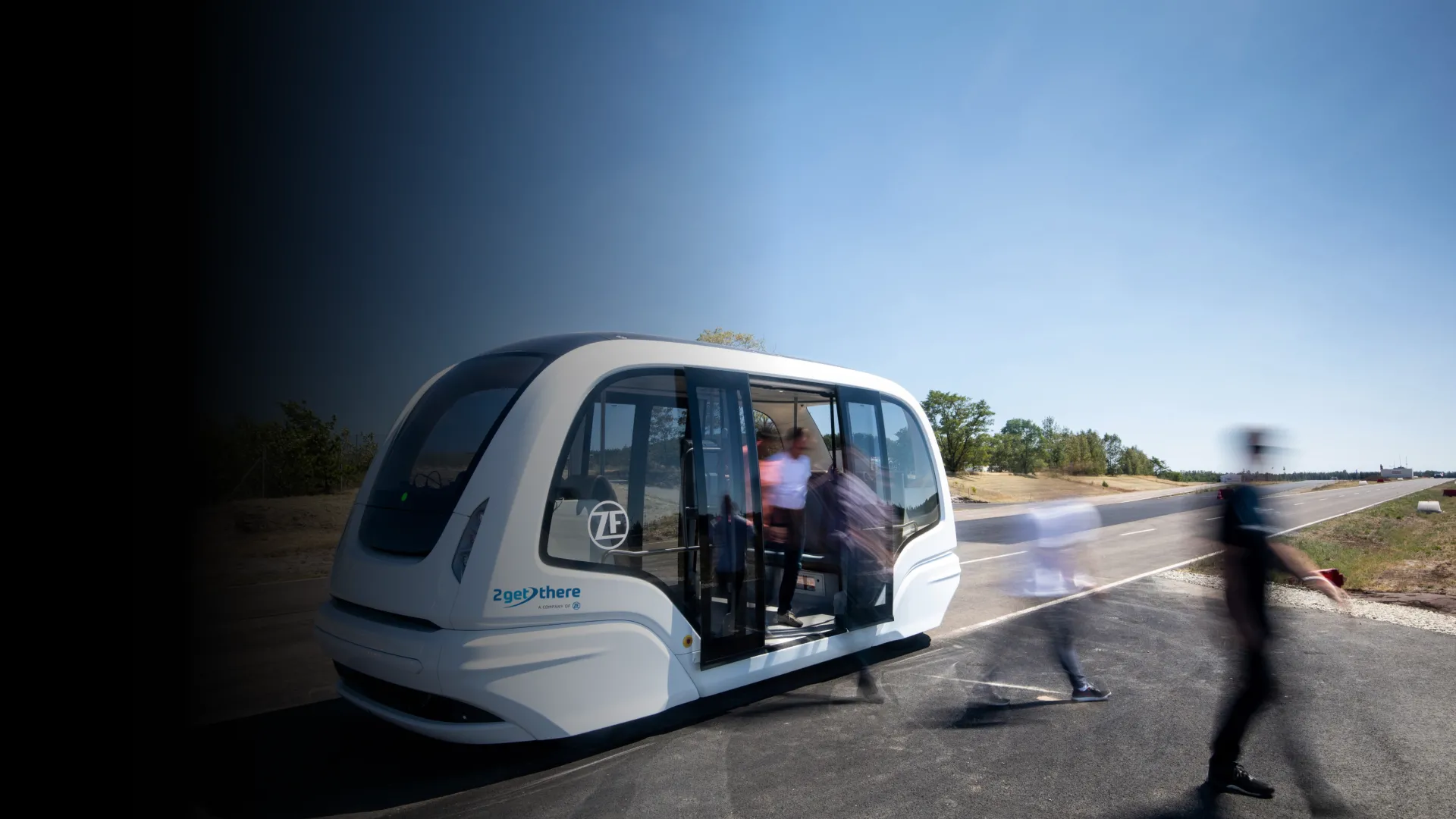Ensuring Secure, Reliable Connectivity from Vehicles to the Cloud
ZF Friedrichshafen AG is a global automotive supplier that enables vehicles to see, think, and act.
A big reason we chose HiveMQ is that we can run HiveMQ everywhere: AWS, Google, Azure, really on any cloud or on-premise. We can run HiveMQ on top of OpenShift or Kubernetes. There is no vendor lock-in with HiveMQ and we aren’t forced to send our data to a single vendor’s platform. The ability to run HiveMQ on-premise or on customer-provided infrastructure is also an important requirement. HiveMQ gives us this freedom.
With a broad range of systems for passenger cars, commercial vehicles, and industrial technology, ZF offers comprehensive solutions for established vehicle manufacturers as well as newly emerging transport and mobility service providers. Currently, the company has 160,000 employees worldwide with locations in 41 countries.
Created in 2017, ZF Autonomous Mobility Systems is tasked with the development of services and applications that support the operation, monitoring, and maintenance of automated/autonomous vehicles. As part of ZF’s 12 billion dollar investment in automated driving and e-mobility, the new business unit’s primary focus is connectivity. Their solutions support ZF’s ambitious “Vision Zero” goal: Mobility with zero accidents and zero emissions.
Enabling the Next Generation of Mobility with HiveMQ and MQTT
ZFs Connectivity Suite enables new business models for mobility as a service (MaaS) and transportation as a service (TaaS). A key component in this strategy is the ProCV gateway device that allows each vehicle to communicate with HiveMQ using MQTT. The ProCV gateway and HiveMQ establish a secure and reliable channel for transferring telemetry data from the car to the cloud and remote commands from the cloud to each vehicle. HiveMQ’s flexible deployment model allows ZF to deploy their Connectivity Suite to a public cloud or on-premise in a customer data center.
ZF relies on the proven performance benefits HiveMQ and the MQTT protocol deliver in IoT connectivity applications:
Steady TCP connections
Small code footprint of the protocol
Low-latency
Fast bi-directional communication
Publish/subscribe pattern
TLS secured communication
Customization via the extension system
ZF particularly appreciates HiveMQ’s powerful open extension system and how easy it is to program the custom extensions they need to implement new use cases. Being able to extend client authorization to include custom business logic is one example of that flexibility. A custom extension that leverages MQTT’s TCP connection to track whether a vehicle is connected to the broker at any given moment is also underway. Logging this type of event to the database for further analysis in backend systems is useful for various purposes such as fleet monitoring.
Bernd Vogt, Software Architect, ZF Friedrichshafen AG, says, "We tested a lot of MQTT brokers. Nothing else on the market matches HiveMQ’s open extension system. For example, the HiveMQ extension system made it possible for us to implement authorization and authentication the way we wanted. As an experienced Java developer, I trusted the HiveMQ trademark. HiveMQ has an excellent reputation. Within the Java community, HiveMQ is one of the first names in MQTT."
ZF Autonomous Mobility System
The ZF IoT ecosystem is deployed on Azure, AWS, and the ZF corporate cloud. Openshift is used to deploy services such as HiveMQ. The components of the connectivity suite manage communication services for vehicles through various transport channels. HiveMQ is ZF’s go-to choice for use cases that require low-latency and near real-time bi-directional communication between the vehicle and the cloud. This MQTT channel via HiveMQ is used to exchange data such as real-time positioning information, remote commands to the vehicle, and vehicle generated alerts.
The ProCV gateway device is suitable for integration into many kinds of systems. Current development concentrates on vehicle connectivity to support projects such as self-driving shuttles. In accordance with automotive industry standards for security and compatibility, the ProCV device separates the communication inside a vehicle from the communication with outside services. The applications that ZF Autonomous Mobility Systems develops include:
Remote diagnostics
Fleet monitoring
Incident management
Map manager
Line planner
Back office services
"A big reason we chose HiveMQ is that we can run HiveMQ everywhere: AWS, Google, Azure, really on any cloud or on-premise. We can run HiveMQ on top of OpenShift or Kubernetes. There is no vendor lock-in with HiveMQ and we aren’t forced to send our data to a single vendor’s platform. The ability to run HiveMQ on-premise or on customer-provided infrastructure is also an important requirement. HiveMQ gives us this freedom."

